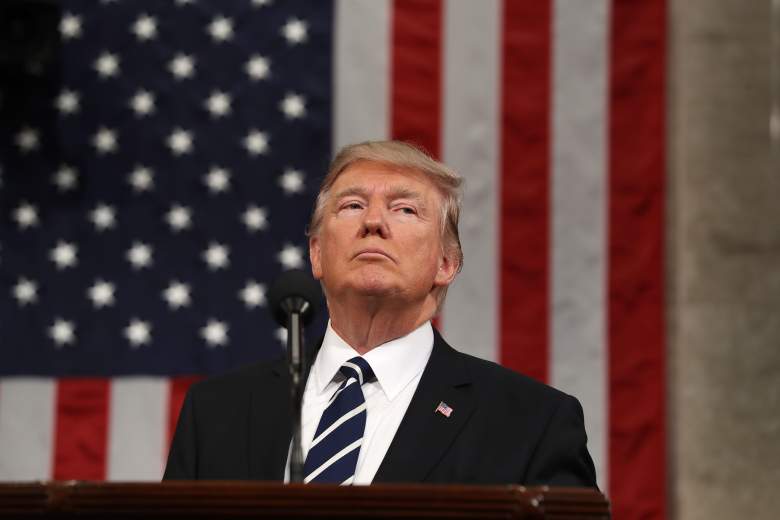
Donald Trump delivers his first address to a joint session of Congress from the floor of the House of Representatives in Washington, DC, USA, 28 February 2017. (Getty)
Donald Trump just signed his administration’s new travel ban, which is replacing the controversial executive order implemented at the end of January.
This new order has the same basic goals of the first one, and it bans immigrants from several Muslim-majority countries from entering the U.S. for 90 days. But while the first order applied to seven nations, this new one applies to six: Iraq has been removed from the list, while Iran, Libya, Somalia, Sudan, Syria and Yemen remain.
Secretary of State Rex Tillerson said today that Iraq is “an important ally in the fight to defeat ISIS,” adding that Iraq will be implementing new screening processes “to achieve our shared objective of preventing those with criminal or terroristic intent from reaching the U.S.” The details of Iraq’s new screening processes have not been made public.
The big difference in the new order is that it makes clear that it does not apply green card holders, visa holders, those with dual citizenship, people on diplomatic missions, and people with asylum or refugee status. When Trump’s original order was signed at the end of January, there were a lot of mixed messages coming out of the White House about whether it applied to legal permanent residents of the United States who hold green cards, and this lead to mass confusion at airports across the country. This new order makes all of that clear.
Another big difference is that the travel ban does not go into effect immediately. Instead, it will begin on March 16th, 10 days from now. The original executive order went into effect the minute Trump signed it, and the Trump administration said that this was the case because if there were any delay between the signing and the implementation, “bad dudes” would flood into the country.
The new order specifies that the only people banned from entering the U.S. for 90 days are foreign nationals of the six countries who are outside of the United States by March 16th and who did not have a valid visa by March 16th.
In terms of the refugee program, the new executive order does not single out Syrian refugees. In the original order, the U.S. refugee program was suspended for 120 days, but the Syrian refugee program was suspended indefinitely. The order introduced on March 6th simply suspends the refugee program, including the Syrian refugee program, for 120 days.
Also, this new order no longer prioritizes religious minorities; the original order prioritized “refugee claims made by individuals on the basis of religious-based persecution, provided that the religion of the individual is a minority religion in the individual’s country of nationality.” Religion no longer plays a part in the order.
“(The order is) not any way targeted as a Muslim ban..we want to make sure everyone understands that,” an official told CNN.
A few things remain the same in the new order, however. The Trump administration still sets the number of refugees that may enter the country in the year 2017 at 50,000; this is down from 110,000 under Barack Obama. That number has not changed between orders.